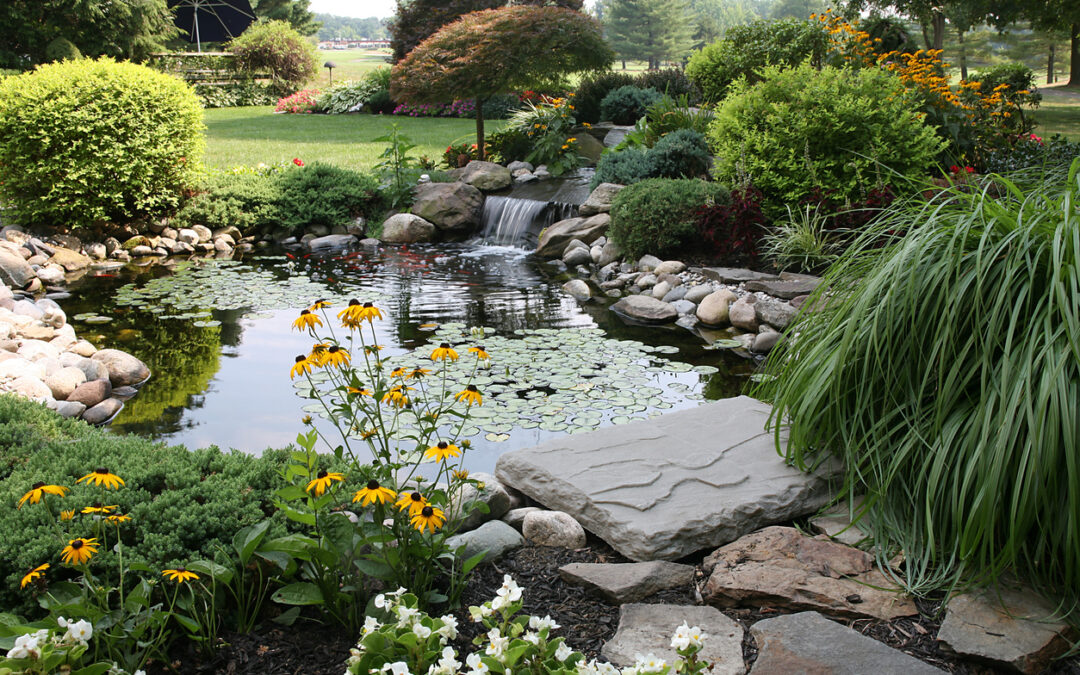Design is not just for interiors
With the popularity of home improvement and DIY, interior design gets all the glory. But we think exterior design (or landscape design) is just as important – if not more important – than its interior counterpart. After all, the exterior of your home is like the hook of a tv show, and if your home doesn’t have curb appeal right off the bat, it’s hard to make that up with the interior alone.
While landscape design may seem simple on the surface, when you dive deeper into what goes into designing a landscape and the elements of design, it’s much more complex than many realize.
What is landscape design?
By definition, landscape design is the arranging of key exterior design elements to create a cohesive, functional, and aesthetically beautiful outdoor space. More specifically, landscape design is the art of finding a balance between hardscapes and softscapes.
Hardscapes vs. Softscapes
A hardscape is made up of all the hard elements in your landscape, like concrete, brick, and stone. For example, your patio is considered a hardscape, as is an outdoor fireplace or a stone water feature.
On the other end of the spectrum, a softscape is made up of – you guessed it – all the soft elements in your landscape, like garden beds, plants, trees, grass, and water. Lawns are often the largest part of softscapes, but if you’re a big gardener, your beds will also fall into this category.
While the concepts of landscape design are fairly simple, design is just a single – albeit important – part of executing a landscaping project, but it is still a great place to start when considering a landscape transformation.
Why work with a professional landscape designer?
The biggest reason to work with a professional when designing your landscape is that they will have years of experience and learnings in the industry, making them well-equipped to stick to budgets and timelines while tapping into established contractors to execute designs.
But, like with any service industry, not all landscape designers are created equal nor do they deliver the equal quality of work, so it’s extra important to put in the time and effort to evaluate potential designers and get a variety of bids before signing a contract for a project. You both should be working towards the same goal: getting the best outdoor space for you and your lifestyle.
Questions to ask before choosing a landscape designer
There are a few crucial questions you should ask while getting bids for a landscape design project, like:
- What services do you offer?
- Can I see your portfolio of work and/or speak with past client references?
- What is your design process, and how do you involve clients in that process?
- What ideas do you have for our yard?
- How long does installation take?
Key elements of landscape design
Now that we have a handle on the basics and importance of landscape design, we can dive a little deeper into the specifics of what actually goes into designing a landscape.
Landscape design elements are somewhat similar to elements you’d find in interior design, and all the key elements will apply to the two foundations of landscape design: hardscapes and softscapes. While landscape design can be quite broad, all elements usually fall into one of these key categories:
Color: Color is a very core element of landscape design, and is often the element that most informs the overall style of your space. For example, more muted, neutral colors will provide a more calm and traditional feel, but bright, bold colors will lean more modern. Color can be incorporated into the design through plants, flowers, furniture, and even hardscape elements, like the shades of stone or wood used in the space.
Lines: Lines are great for building dimension in your design and can be brought into the space through structures, accessories, and, especially, where hardscapes and softscapes meet. What’s more, lines can inform overall style, as well. For example, a rounded patio against the lawn is more casual and playful, while straight lines may feel more modern or industrial.
Texture: Mixing up textures is the easiest way to bring some variety to your design. Every individual element, accessory, or even plant brings its own unique texture to the space, and finding a balance is crucial to an interesting design. For example, you can have a variety of leaf types in your garden bed, types of stone laying out your garden path, and wood grains in structures, furniture, and even larger bushes and trees.
–
With landscape design, the possibilities are endless, and if you’re considering giving your exterior spaces a total transformation, working with the right team to make your ideas into reality is crucial.
If you’re ready to dive into your next landscape design and construction project, our friendly team of experts at Greenhaven Landscapes is ready to help! Contact us on our website or give us a call today.

